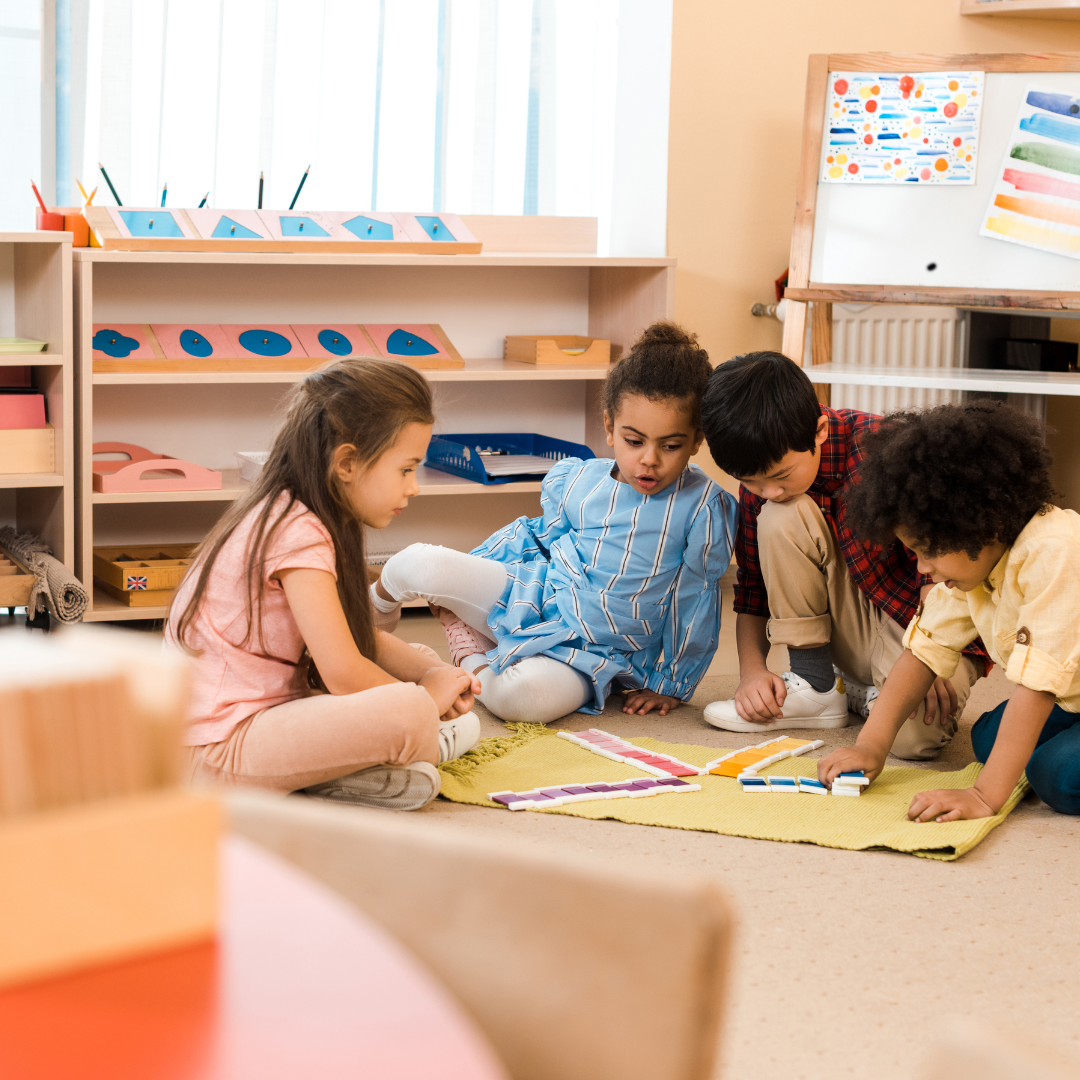
Montessori vs Reggio: An overlook about each philosophy, similarities and differences.
Partager
Montessori vs Reggio
As parents, we want the best for our children with a great and bright future. We always start deciding what we should teach our children at home, and what daycare, preschool, and school they should attend. It is not always easy deciding when there are so many options to choose from, or if the family has some budgeting issue. Many of you have probably heard about the Montessori philosophy and education, and maybe a few others have heard about the Reggio education.
Our blog will explore what Montessori and Reggio's education are, and the differences, and similarities between the two. The purpose of this blog is solely to inform you about each type of education; however, it is not designed to choose one over the other.
What is Montessori?

Dr. Maria Montessori developed the Montessori philosophy in the early 20th century. Maria Montessori worked closely with children of all ages and observed that all children were different and very unique; therefore, one learning method would not be adequate for all children. The Montessori method (to learn more about Montessori read our other blog) is a child-centered educational approach emphasizing independence, hands-on learning, and collaborative play. When practicing a Montessori approach, the teacher or parents, serve as a guide and prepare the environment (that is safe, free of clutter, simple, and aesthetically pleasing) for the baby/child to interact with, move freely, and explore. Montessori classrooms normally mix children of all ages where the older children can help or guide the younger ones.
Unlike traditional education, Montessori education does not follow a top-down learning approach where the teacher imposes what they will be learning today and passes it down to the students.
What is Reggio?

The Reggio Emilia approach originated in Italy after World War II, founded by Loris Malaguzzi and parents in the village of Reggio Emilia. The Reggio approach emphasizes that children are powerful, full of curiosity, capable learners, and an innate desire to explore. In Reggio's philosophy, natural materials and colors are widely used enabling children to use what Reggio calls the “100 languages”. Reggio schools implement the practice of working in small groups, the teacher’s role is of a researcher and collaborator, and these schools focus more on arts and crafts, music, and expression of movement such as dancing. They are more gravitated toward an artistic and hands-on approach.
Similarities between Montessori and Reggio:
- Children: The first similarity between Montessori and Reggio is that children are the focus of a learning approach. Each child is seen as a unique capable human being able to learn in their style and pace. Both methods, seek to give children autonomy, foster independence, and take charge of their learning journey.

- Use of Natural Materials: The second similarity is that they both prefer to use natural materials such as wood or wooden toys, fabric, untouched resources from nature, and others. The purpose of this is to give children the ability to feel the world through their senses, explore it, and understand it better. Different textures provide different feelings; therefore, developing all senses differently.
- Emphasis on observations: In both methods, observations play a crucial role. The teacher, parent, or guardian, observes the baby/child interact with the environment and play with different activities. These observations are meant to understand each child’s development needs and when a different activity needs to be introduced. Observations also help the teacher to facilitate the learning of the child whenever possible.
Differences between Montessori and Reggio:

- Environment: In a Montessori philosophy, the adult carefully and nicely prepares the environment displaying different activities and toys for the baby/child to pick and choose. The environment needs to be free of clutter, safe, aesthetically pleasing, and everything at the child’s height. Montessori attempts to hit academics and arts during their learning approach led by the children.
In a Reggio approach, the environment is more relaxed and more fluid. The activities and materials are not prepared and displayed on trays on top of shelves. Instead, the room has many different types of materials for the children to freely choose and interact with. In Reggio classrooms, children are placed with other children of the same age based on the same academic year.
- Role of the Teacher: In a Montessori environment, the teacher serves as a guide or facilitator where they observe the baby/child interact with the environment and decide which activity is more suitable based on the child’s individual needs.
In a Reggio environment, the teacher serves as a collaborator who works and learns alongside the children. The teacher helps document learning development and poses questions to encourage deeper thinking. In Reggio, the teacher does not need to take any training or be certified, unlike Montessori teachers.
- Artsy and Dynamic: A Montessori environment emphasizes the learning of academics and arts through an aesthetically organized prepared environment. The children choose what they want to learn and interact with the activity whether is academics or arts and crafts. The natural materials provided to children target all these areas from math, language, and geography to arts, music, and creations.
A Reggio philosophy focuses more on arts and crafts, music, and expression of movement such as dancing. Reggio emphasizes the development of children using materials, expressive language, and design. Reggio tries to create activities that involve all sort of materials that involve all senses and stimulation.

In Conclusion, we looked at what each education approach is, and the similarities and differences between each philosophy. We discussed that both, Montessori and Reggio philosophies, emphasize on the child, and see each child as unique and capable of learning many things. Both use natural materials and resources during the child’s learning experience and observations are made about the child’s learning development, milestones, and interests.
On the opposite, Montessori offers a more structured, independent learning environment with a focus on self-discipline and individual achievement. Reggio Emilia provides a more collaborative, flexible approach, encouraging creativity and social interaction. The teacher in a Montessori philosophy serves as a guide for the child and needs to be certified while in a Reggio philosophy, the teacher is a collaborator working alongside the child and does not need to be certified. Reggio focuses more on arts, music, and dancing while Montessori focuses on both academic and arts.
Both methods have proven effective in nurturing confident, curious, and capable learners. As a parent, understanding these differences will help you make the best choice for your child’s early education.
Let us know in the comment section below which method you like more or are more inclined toward.
If you enjoy reading our blogs, don’t forget to subscribe to stay up to date. Also don’t forget to follow us on Instagram, Facebook, TikTok and Pinterest.
Additional readings and sources:
Working in the Reggio way: A beginner's guide for American Teachers by Julianna P. Wurm.
The Montessori Toddler: A Parent's Guide to Raising a Curious and Responsible Human Being by Simone Davies.
The Montessori Child: A Parent's Guide to Raising Capable Children with Creative Minds and Compassionate Hearts by Simon Davies.
* Disclaimer, we are not certified teachers or experts on either philosophy, we are providing information to other parents based on our experience as parents, practices and things we have learned from books and articles*

